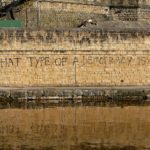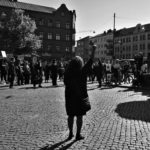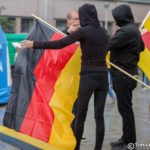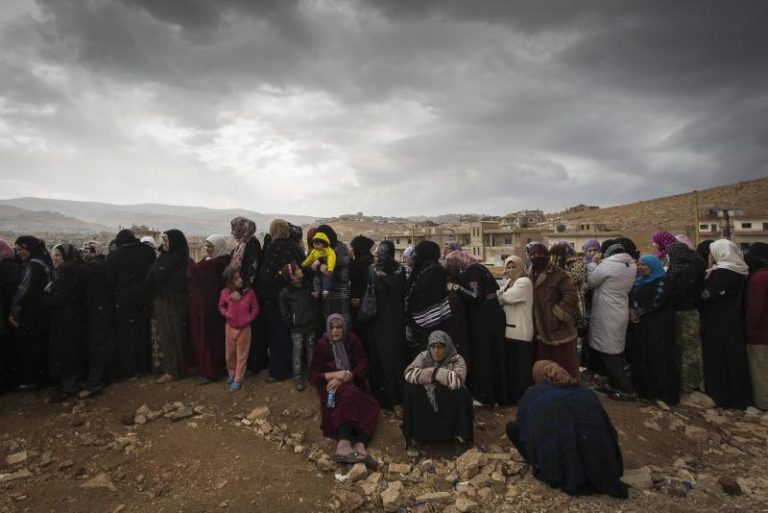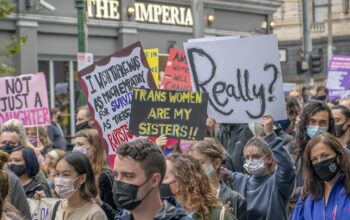Wars, accidents and natural disasters seem to be on the news almost on a daily basis, and we only need to open a history book to find an entire plethora of terrible events of the past. It is no wonder then that, just like individuals, whole communities and even nations can experience trauma which can pass on to future generations either through socialisation or even genetically and can affect cultural or national identity. As with all trauma the question of how to process it and how to – ultimately – move on, so as not to become paralysed by it stands in the room.
In between past and future
‘A crime takes place in two acts. First, the act of killing. Then, that of getting rid of the evidence’, Lebanese film director Ghassan Halwani, son of Wadad Halwani who is president of the Committee of disappeared and kidnapped people [during the Lebanese civil war], told journalist Emmanuel Haddad. After the civil war, in August 1991, an amnesty law was quickly passed and a second law, in 1995, urged the families of those that had disappeared (a total number of 17 415 people in addition to 150 000 deaths) to declare them dead if they’d been gone for more than four years.
Yet, instead of enabling the nation to reconstruct and face the future, this course of action trapped a large part of the population in a state of frozen mourning. Not knowing what happened to their loved ones, if they were dead or alive, possibly imprisoned in Syria or Israel, they were faced with a government that would rather have everyone forget about the years in between 1975 and 1990, and turn the page.
The conflict between the wish to move on and the necessity to find justice or at least answers and process the past is not unique to Lebanon. Describing a post-conflict Kosovo, German journalist Carolin Emcke writes about a group of women protesting for their husbands taken hostage during the war and missing since then: ‘But all those politicians who are not prepared to speak to the disheartened women are all too prepared to mention their fate if they can instrumentalise it in their speeches on independence and the possibility of reconciliation with Serbian civilians. […] The crime committed against them is of use, the victims of the crime are overlooked: No one wants to be reminded of their pain, their presence disturbs the general pursuit of normality. […] One year after the war, there is not only the issue of territorial ghettos but also that of mental enclaves’ (Carolin Emcke, Von den Kriegen: Briefe an Freunde, 2004, pp.122-124).
Healing society
‘What I’ve learned is that when traumas are ignored, they are passed on from generation to generation’, says filmmaker Andres Lubbert who investigated the past of his father who fled Chile after being forced to work for Pinochet. ‘The only way to heal a society is by starting a dialogue.’
But how to start a dialogue when society is expected to forget and move on?
In Lebanon, some of the families of the disappeared have been organising since 1982 to find out what happened to them, to achieve justice and act against forgetting. After 36 years, on 28 November 2018, the Lebanese parliament passed a law (no. 105) which recognises the right of the victims’ families to know the fate of their loved ones. To grant this right, an independent commission is supposed to be created to localise mass graves and identify the bodies buried there.
Despite suspicions that this law is merely a strategy to gain respectability in the eyes of the international community without there being any sincere intent to apply it in practice, as was the case with 39 other laws on various issues, it still denotes an achievement of those demanding justice and clarity. For the first time the telling of the story of the civil war is up to them.
A group of Syrian women pursued a similar strategy as they protested outside the United Nations (UN) headquarters in Geneva in 2017. Their demand to the UN was to bring up the disappearance of their family members in the Geneva talks. For years now, these women have been trying to find out what happened to their loved ones, to no avail. But still they continue. One of the protesters, 63 year-old Fadwa Mahmoud, stated that even though they were only five women at the protest in Geneva, there were thousands more in Syria supporting them. ‘It’s different when politicians claim to speak on our behalf. We are the ones that represent the real people’, she said.
To move on from collective trauma, there needs to be a dialogue – an act of balancing remembering and active forgetting as a step toward letting go. Policies that instead seek to suppress all memory of the events that have created the trauma or to deny the traumatised the knowledge of what happened in the first place will merely leave society paralised by its inability to process its traumatic past.
The comfortable horrible
After the end of the dictatorship in 1983, the Argentine government (under Raúl Alfonsín) set in motion the 1985 Trial of the Military as an ‘exemplary educative trial’. Yet, responsibility for the disappearances during the dictatorship extended beyond the most senior ranks of the military to which the trial was limited and public demands for more trials grew as they were seen as an effective way to find answers and pursue justice. However, both Alfonsín and his successor Carlos Menem introduced a series of amnesty laws and pardons in the name of reconciliation. Menem went so far with his policy of reconciliation that stands in contrast to public demands for justice and the establishment of collective memory as to suggest the demolition of the Escuela Superior de Mecánica de la Armada (ESMA), a building used as a secret detention centre during Argentina’s ‘dirty war’.
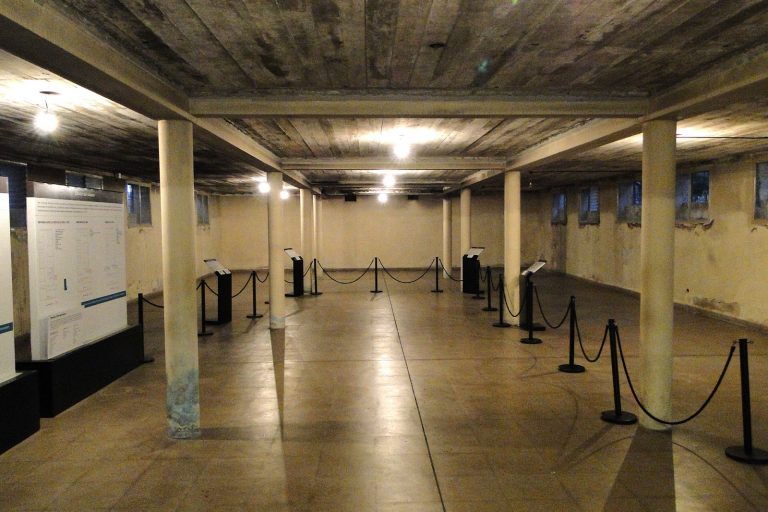
The plan was ultimately stopped by a court ruling which decrees that the victims’ relatives have a right to the preservation of the ESMA in addition to there possibly being further evidence inside the facility that might offer knowledge about the whereabouts of the victims’ remains and what happened to them. In 2004, the government of President Néstor Kirchner gave in to public demand and opened up a new pathway to deal with the nation’s trauma by deciding that the ESMA should be turned into a pedagogic space of public memory.
Unlike judicial procedures and court trials that aim to establish justice, commemorative spaces such as museums provide the opportunity to create and establish collective memory that is entirely accessible to the public and can serve as a placeholder for justice. From the Liga Argentina por los Derechos Humanos’ opinion that the ESMA should be reconstructed to appear exactly as it was when it was used as a torture centre to the suggestion of the Madres de Plaza de Mayo to turn the building into an art school, a debate ensued about how to tell the story of the place. What needs to be remembered and what forgotten? How can the past be connected to the present and future? Should art be included to mediate, to create the ‘comfortable horrible’ that prevents defensive ignorance? How can the memory of the past be passed on and how can the singularity of being alive be recovered that was stripped from the victims as their existence was turned into bare life? In essence: how to move on from collective trauma as a nation?
Written by Merle Emrich
Photo Credits
Run!, Merle Emrich, All Rights Reserved
Lebanese Town Opens its Doors to Newly Arrived Syrian Refugees, M. Hofer (UNHCR), CC BY-NC 2.0
Basement Area – Escuela de Mecanica de la Armada (ESMA) – Detention and Torture Center – Buenos Aires – Argentina – 01, Adam Jones, CC BY-SA 2.0


